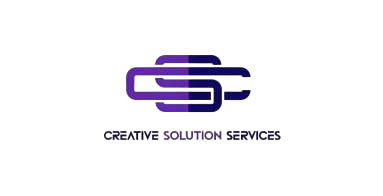All of the information you require regarding graphic design will be covered in this guide, regardless of whether you are a business owner seeking to enhance your brand identity or an aspiring graphic designer.
Describe Graphic Design
Graphic design is the art and practice of communicating visually via the use of layout, color, typography, and imagery. For a variety of formats, including digital, print, packaging, and branding, it entails producing aesthetically pleasing content.Different Graphic Design Types
Among the many specialties that fall under the wide category of graphic design are:- Branding and Identity Design: Creating business cards, logos, and brand guidelines for organizations.
- UI/UX Design: Making user-friendly interfaces for websites and apps.
- Print and Publishing Design: Designing books, periodicals, flyers, and brochures.
- Advertising and Marketing Design: Creating images for digital advertisements, billboards, and social media.
- Packaging Design: The process of making product packaging that is both aesthetically pleasing and useful.
- Motion Graphics and Animation: Creating animated visuals and video material.
Essential Tools for Graphic Design
Understanding the fundamental tools and software is necessary to succeed as a graphic designer. Among the most often utilized tools are:- Adobe Creative Suite:
- Adobe Photoshop: For digital art, photo editing, and effects.
- Adobe Illustrator: To create vector images, logos, and illustrations.
- Adobe InDesign: For print items including presentations, brochures, and magazines.
- Adobe After Effects: For animations and motion graphics.
- Canva: A user-friendly tool for creating social media visuals, presentations, and marketing materials using pre-made templates.
- CorelDRAW: A substitute for Adobe Illustrator that is frequently used for layout and vector design tasks.
- Sketch & Figma: Tools widely used for UI/UX design, prototyping, and web development.
- Procreate: An iPad favorite for illustrators and graphic artists.
Fundamentals of Graphic Design
Great design adheres to basic principles to guarantee clarity and efficacy in addition to being creative. These are a few fundamentals of graphic design:- Balance: Keeping design elements symmetrical or asymmetrical to preserve visual harmony.
- Contrast: Using various colors, typefaces, or shapes to draw attention to important elements.
- Alignment: Making sure everything is set up correctly to produce a neat and orderly appearance.
- Hierarchy: Setting information priorities by modifying font, color, or size to direct users’ attention.
- Repetition: Using recognizable fonts, colors, and styles to build brand awareness.
- White Space: Leaving vacant space around elements to make things easier to read and concentrate on.
The Graphic Design Process
An organized method guarantees designs that are both functional and aesthetically pleasing. The essential actions consist of:- Comprehending the Brief: Learning about the target audience, objectives, and needs of the client.
- Research and Inspiration: Examining competitors, market patterns, and mood boards to find inspiration.
- Conceptualization: Sketching concepts, wireframing designs, and coming up with original solutions.
- Implementation of Design: Using software tools to develop and improve the finished design.
- Revisions & Feedback: Asking stakeholders or clients for input and making the required changes.
- Final Delivery: Exporting designs in formats suitable for digital, print, or web media.
Career Options in Graphic Design
Career options in graphic design in the United Kingdom are varied and span several industries. Among the most prevalent roles are:- Graphic Designer: Comes up with digital content, branding assets, and marketing materials.
- UI/UX Designer: Focuses on creating user interfaces that are both aesthetically pleasing and easy to understand.
- Motion Graphics Designer: An expert in motion graphics, video effects, and animation.
- Brand Identity Designer: Creates brand colors, logos, and corporate design standards.
- Illustrator: Produces original artwork for web platforms, publications, and ads.
- Freelance Designer: Autonomously collaborates on marketing, branding, and creative initiatives with a range of clients.
Current Graphic Design Trends
With the advent of new trends and technologies, graphic design is always changing. Some recent developments influencing the sector include the following:- Simplicity and Minimalism: Simple, uncluttered designs that highlight key components.
- 3D and Realistic Designs: Incorporating 3D components into logos, UI designs, and graphics.
- Retro and Vintage Styles: Designs that evoke nostalgia for bygone decades.
- Bold Fonts: Statement-making fonts that are imaginative and expressive.
- Interactivity & Augmented Reality (AR) Design: Designs with interactive features and augmented reality experiences.
- AI-Generated Art: AI-driven technologies to help create design concepts and artwork.
Building Your Design Brand
Establishing a strong personal or business brand is key to standing out in the graphic design world. Here’s how to build your brand:- Define Your Style: Identify what makes your work unique — whether it’s bold colors, minimalist layouts, or playful illustrations.
- Create a Logo & Visual Identity: Design a logo, choose brand colors, and develop a cohesive aesthetic that reflects your personality or business values.
- Build a Portfolio Website: Showcase your best work with case studies and client testimonials. Platforms like Behance, Dribble, or a custom WordPress site are great options.
- Leverage Social Media: Share your design process, post finished projects, and engage with design communities on Instagram, LinkedIn, and Pinterest.
- Network and Collaborate: Connect with other creatives, join design events, and consider collaborations to expand your reach.
- Consistent Branding: Apply your visual style across everything — from social media banners to business cards — to create a recognizable brand presence.
How to Begin Creating Graphics
Here’s how to start if you’ve never done graphic design before:- Get the Fundamentals Right: Start with YouTube videos, online guides, and courses for beginners.
- Work on Personal Projects: Make branding initiatives, social media visuals, and mock designs to hone your abilities.
- Master Design Software: Develop your proficiency with Adobe Illustrator, Photoshop, and other necessary programs.
- Establish a Portfolio: Display your finest work on websites or Dribbble and Behance.
- Get Experience: Take on creative projects with others, and work as a freelancer or intern.
- Stay Up to Date: Keep up with industry trends, go to workshops, and read design blogs.
In Conclusion
Technology and creativity are combined in the dynamic and fascinating field of graphic design. Whether you’re a budding designer or a company owner hoping to improve your brand, knowing the fundamentals and resources of graphic design can lead to countless options.Stay ahead of the curve in the ever-evolving design profession by continuing to study, try new things, and hone your craft.Are you trying to find a competent graphic designer? To realize your imaginative vision, get in touch with us right now!



